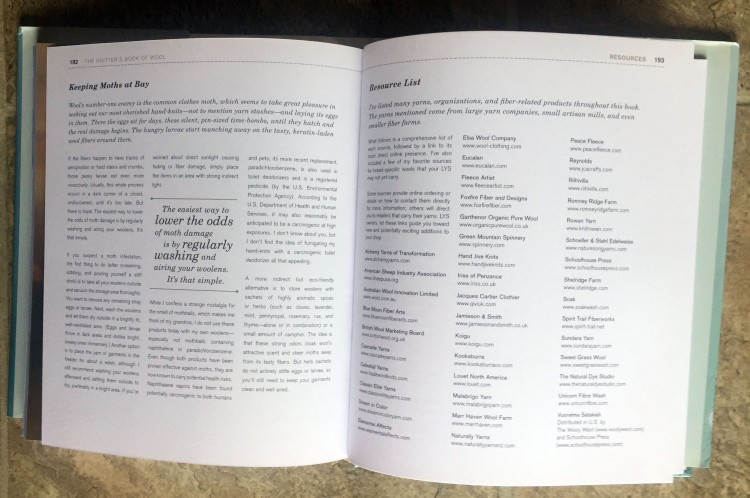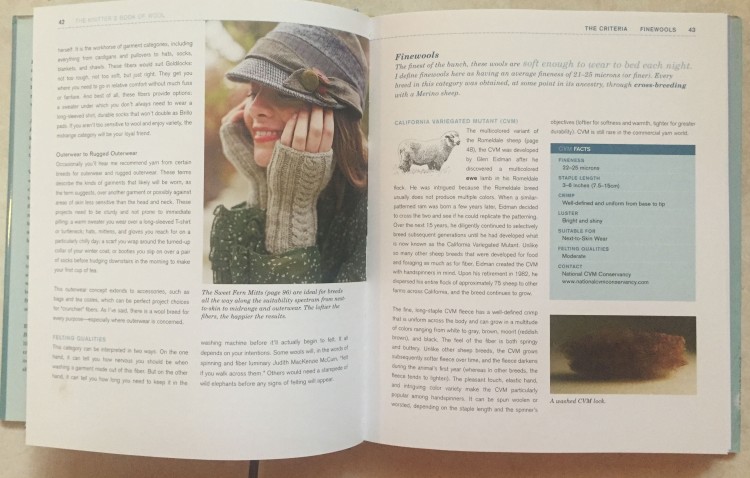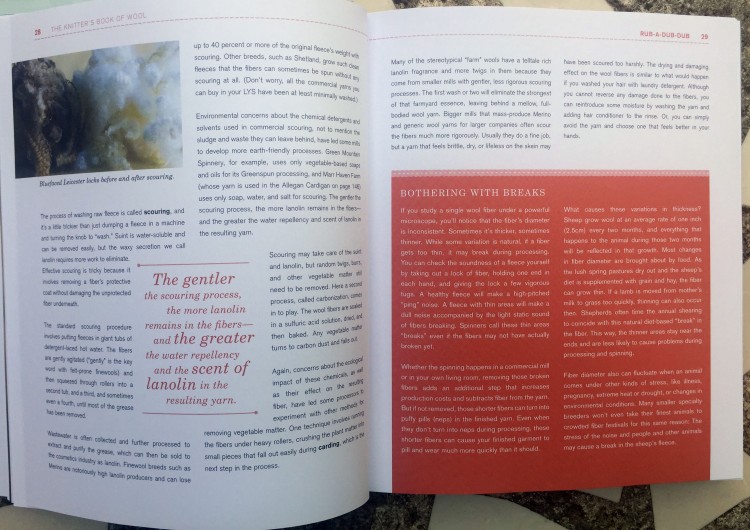
The Knitter’s Book of Wool
It’s been a long time coming, but I’m finally done with Clara Parkes wonderful book. Before you even ask – it’s a keeper.
In this blog, I’m going to discuss Chapter 4 – blended fibers and Chapter 5 – patterns along with a bit about the end material.

Chapter 4 – Plays Well With Others
Mixing wool with fibers such as silk, mohair, alpaca, cashmere and angora bring the best of all worlds. Clara talks about blending wool for different effects. The results are wonderful for knitters.

Chapter 4 – blending with angora, alpaca, cashmere

Chapter 5 – Patterns
Now that we know so much about wool, having patterns to use the yarn is a “no brainer”.

Chapter 5 – socks
Wool is a natural for socks. It’s warm, it wicks and it lasts with wear.

Chapter 5 – Instructions
I’m always looking for clear instructions, charts and schematics. This book doesn’t disappoint.

Chapter 5 – Charts

Washing Wool
How do you wash wool? Hand washing is outlined step-by-step. Good advice. The next page covers keeping moths at bay. More good advice.

Resource List
The resources plus processors on the next spread are a great follow up to the book. The book ends with abbreviations, a glossary, recommended reading and info on the pattern designers. What a way to end the book!

Sweet Fern Mitts
My mitts are above. Notice that the one of the left is a disaster. The cables are wrong and I really wanted a few more rows between the cables (decided part way into the mitt. The right mitt is much better. I need to make another pair now that I’ve corrected my mistakes!












































